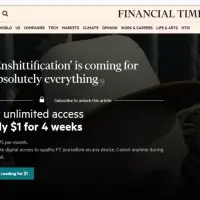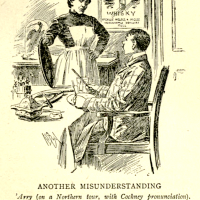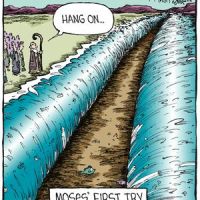Anyone who has heard a lecture from the characteristic voice of Peter Kreeft—and there are a number available free on iTunesU—will hear his humour behind the words of his dozens of books. His books are typically serious. Kreeft is a Catholic philosopher at Boston College, and writes as a Christian apologist and speculative thinker in  four key areas: basic philosophy, arguments for God’s existence, C.S. Lewis, and the topic of Heaven and Hell.
four key areas: basic philosophy, arguments for God’s existence, C.S. Lewis, and the topic of Heaven and Hell.
While he works seriously as a philosopher, his humour comes through in some of his projects. He has written a Screwtape copycat book, The Snakebite Letters, laced with satire as he explores the upside-down perspective of Screwtapian anti-spirituality. And he is well known for his Between Heaven and Hell, a creative thought exercise where John F. Kennedy, C. S. Lewis, and Aldous Huxley—all famous men who died on Nov 22, 1963—meet in the afterlife and have an extensive conversation. With this background, and in the rolling humour of his lectures, I have a tendency to read lightness even in Kreeft’s weighty works.
Picking up Kreeft’s first book on C.S. Lewis, then, I was surprised at the boring title: C.S. Lewis: A Critical Essay. The title is deceptive in its lacklustre—it is quite a good read, accessible yet substantial. This brilliant start to the book reveals Kreeft’s style:
“Once upon a dreary era, when the world of Functional Specialization had nearly made obsolete all universal geniuses, romantic poets, Platonic idealists, rhetorical craftsmen, and even orthodox Christians, there appeared a man (almost as if from another world, one of the worlds of his own fiction: was he a man or something more like an elf or an angel?) who was all of these things an amateur, as well as probably the world’s foremost authority in his professional province, medieval and Renaissance English literature. Before his death in 1963 he found time to produce some sixty first-quality works of literary history, literary criticism, theology, philosophy, autobiography, Biblical studies, historical philology, fantasy, science fiction, letters, poems, sermons, formal and informal essays, a historical novel, a spiritual diary, religious allegory, short stories, and children’s novels. Clive Staples Lewis was not a man: he was a world” (4).
 The title is also deceptive because it is not a critical essay, really. It is more of a series of essays with light interpretation around substantial quotation from Lewis himself. There are very few references to other sources, but really Kreeft’s presentation of Lewis’ ideas in his fiction and apologetics filtered through Kreeft’s vision of Lewis the man.
The title is also deceptive because it is not a critical essay, really. It is more of a series of essays with light interpretation around substantial quotation from Lewis himself. There are very few references to other sources, but really Kreeft’s presentation of Lewis’ ideas in his fiction and apologetics filtered through Kreeft’s vision of Lewis the man.
Kreeft’s biographical understanding of Lewis, then, is key to the entire book. Kreeft frames Lewis’ character around around the subtitle of his book, Pilgrim’s Regress: An Allegorical Apology for Christianity, Reason, and Romanticism. His thesis is that Lewis’ romanticism and reason were separate and combative factors in his world—the North and South of the road in Pilgrim’s Regress—as Lewis himself says, “the two hemispheres of my mind were in the sharpest contrast” (Surprised by Joy, 162). While this battle raged through youth and into  adulthood, his Christianity brought the two worlds together:
adulthood, his Christianity brought the two worlds together:
“The romantic-rational blend was far from automatic. A catalyst was needed, powerful enough to make peace between two very diverse powers” (Kreeft, 9).
That catalyst was his faith, which lit up both his imagination (as we see in his fiction) and his rational intellect (as we see in Lewis’ religious philosophy).
In this way, Peter Kreeft’s book is an essential read for Lewis students. He has a way of capturing the potentially overwhelming depth and breadth of this 20th century thinker in simple terms. For example, here is a poignant summary of Lewis’ career:
“The three main strings to Lewis’ bow, rationalism, romanticism and Christianity, correspond to the three main genres of his writing, literary criticism, imaginative fiction and apologetics. All three genres carry the common theme of a ‘lover’s quarrel with the world’ of modernity” (13).
The presentation, while simple, is not simplistic. We are left wondering what that lover’s quarrel is about, and how Lewis’ anti-modern stance formed his work—ideas that Kreeft works out  through the five short chapters. Kreeft’s Critical Essay, then, is an accessible read that adds much to early Lewis scholarship (written in 1969).
through the five short chapters. Kreeft’s Critical Essay, then, is an accessible read that adds much to early Lewis scholarship (written in 1969).
There are aspects of this book that I found, apart from the main thesis, either helpful or unhelpful. I found his response to the argument that Lewis was a conservative—really a cluster of accusations—quite helpful. I found his understanding of the “mythic cosmos”—what I call elsewhere the “fictional universe” behind fantasy stories—particularly exciting, including his consideration of the Ransom Trilogy and Narnia in this light:
“Narnia’s cosmos is true in the same mythic sense as that of the trilogy: it holds together as a world in itself, integral, consistent, and ‘astonishingly underivative.’ There is so much reality in it that the question of the reality outside it and of its relations to that latter reality need not even arise” (37)
While Kreeft is a philosopher, some of his literary criticism yields great results.
By contrast, I found aspects of this short book unhelpful. I truly missed accurate footnotes with page numbers–an editorial choice. Kreeft puts Screwtape Letters and The Great Divorce in the category of “allegory” with The Piglrim’s Regress—a designation that is bound to skew the reading of those books. I am not sure that the comparison of  Lewis with Søren Kierkegaard in the final chapter is a very helpful one. And occasionally I found Kreeft’s positive assessments bordered on gushing. His reference to Lewis being an angel or an elf has a nice literary symmetry later in the book; throughout, however, there are comments like “the remarkable lack of egotism” (4) and “few men (and fewer Christians) have had as frank, as fresh, and as pagan a love of the world” (13). Over all, I feel like it is a balanced book—a “critical” essay. At points, though, it hints at the Lewis hagiography that is to emerge from American lovers of Lewis.
Lewis with Søren Kierkegaard in the final chapter is a very helpful one. And occasionally I found Kreeft’s positive assessments bordered on gushing. His reference to Lewis being an angel or an elf has a nice literary symmetry later in the book; throughout, however, there are comments like “the remarkable lack of egotism” (4) and “few men (and fewer Christians) have had as frank, as fresh, and as pagan a love of the world” (13). Over all, I feel like it is a balanced book—a “critical” essay. At points, though, it hints at the Lewis hagiography that is to emerge from American lovers of Lewis.
I wonder, though, how accurate Kreeft’s central thesis is: namely, that Lewis’ Christianity brought together the hemispheres of his intellectual heart. In the end, he argues that “Lewis never fully resolved his basic dualism of rationalism and romanticism: his  philosophy is better put in his philosophical works and his fiction is best when the philosophy is so implicit in the simple beauty of the story or setting that extraction is impossible” (40). Perhaps Lewis was settled psychologically about the bridge, but Kreeft argues that his work still shows a bifurcated nature.
philosophy is better put in his philosophical works and his fiction is best when the philosophy is so implicit in the simple beauty of the story or setting that extraction is impossible” (40). Perhaps Lewis was settled psychologically about the bridge, but Kreeft argues that his work still shows a bifurcated nature.
Regardless of the outcome on this precise point, Peter Kreeft’s C.S. Lewis: A Critical Essay is well worth a read. I don’t know if more recent editions are updates or just reprints, but I would recommend it to anyone looking for an intelligent introduction to Lewis’ literary influence.






















Pingback: Peter Kreeft on Hell (Hell Series Part 2) | A Pilgrim in Narnia
Pingback: A Year of Reading | A Pilgrim in Narnia
Pingback: Why is Tolkien Scholarship Stronger than Lewis Scholarship? Part 1: Creative Breaks that Inspired Tolkien Readers | A Pilgrim in Narnia
Pingback: The C.S. Lewis Studies Series: Where It’s Going and How You Can Contribute | A Pilgrim in Narnia